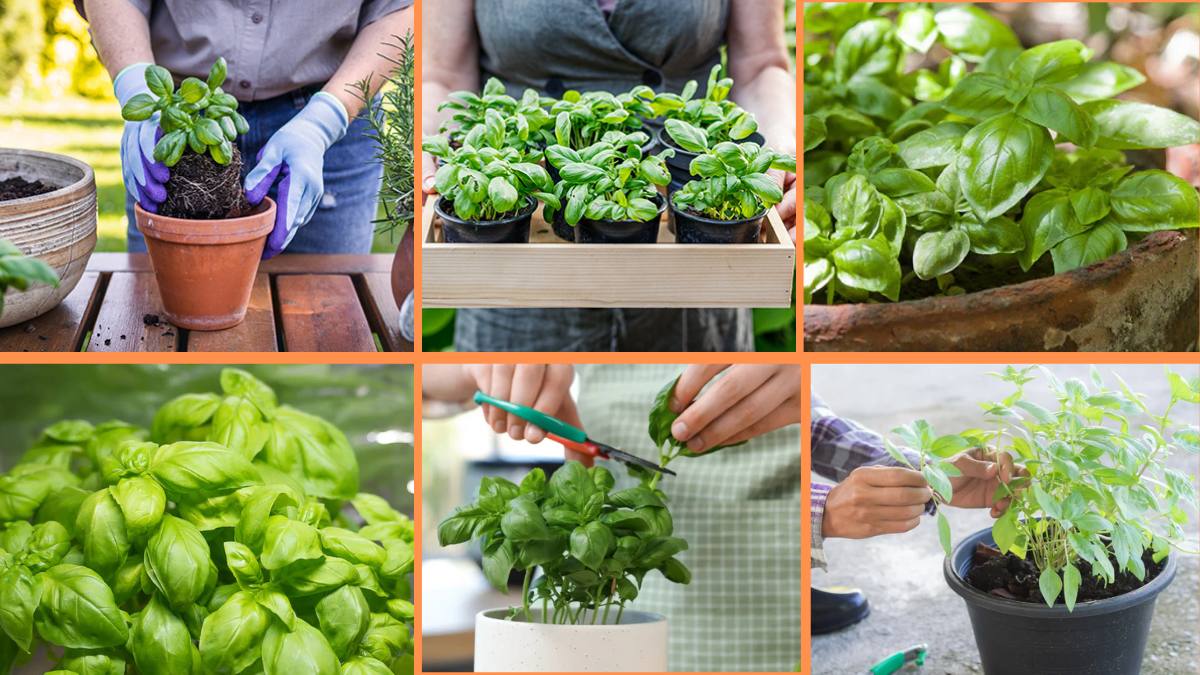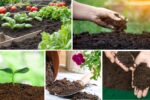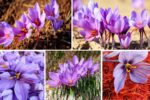If you’ve ever dreamed of walking into your garden and picking fresh, fragrant basil leaves to toss into your pasta, top your pizza, or infuse in a summer cocktail, you’re not alone. Basil (Ocimum basilicum) is one of the easiest and most satisfying herbs to grow — whether you have a sprawling backyard garden, a compact balcony, or even a sunny windowsill.
Known for its lush green leaves and sweet, peppery aroma, basil is a warm-weather favorite with culinary and medicinal uses dating back centuries. In this beginner’s guide, you’ll learn how to start growing basil from seed or seedling, care for it throughout the season, and harvest flavorful leaves for your kitchen.
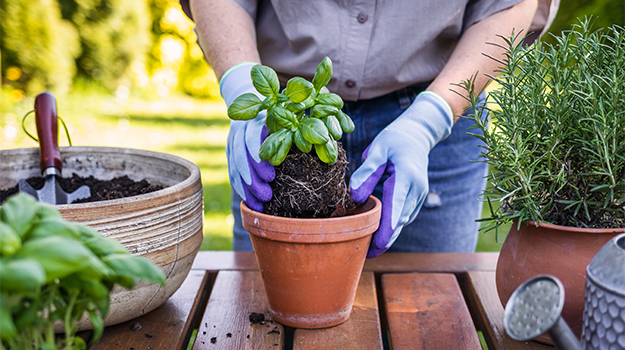
Why Grow Basil?
Growing basil isn’t just about adding fresh flavor to your meals — it also comes with other benefits:
- Fast-growing and beginner-friendly
- Thrives in containers, raised beds, or garden plots
- Adds pollinator-attracting flowers to your space
- Pleasing fragrance for patios and windowsills
- Can be preserved through drying, freezing, or infusing
If you’re new to gardening, basil is an ideal herb to start with thanks to its low maintenance needs and quick rewards.
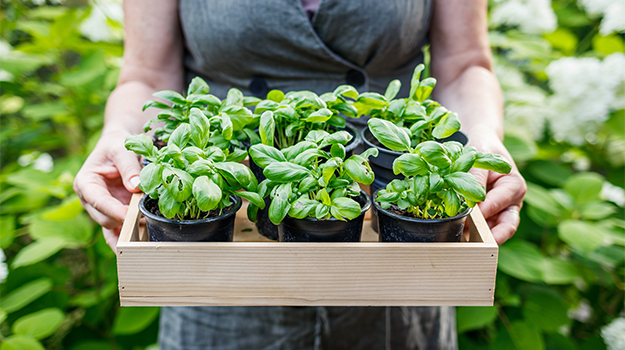
Popular Basil Varieties to Grow
Basil isn’t a one-flavor herb — there are several unique varieties, each offering a slightly different aroma and taste. Here are some popular options:
- Sweet Basil:
The classic Italian basil, perfect for pesto, pasta, and pizza. Lush green leaves with a balanced sweet-spicy flavor. - Genovese Basil:
A variety of sweet basil known for its large, tender leaves and intense aroma — excellent for authentic pesto. - Thai Basil:
Spicy, licorice-scented leaves used in Southeast Asian dishes. Dark green leaves with purple stems. - Purple Basil:
Decorative and flavorful, with deep purple leaves and a mild, clove-like flavor. - Lemon Basil:
Bright citrus scent and flavor — great for fish, teas, and desserts.
Tip: Start with Sweet or Genovese basil if you’re a beginner.
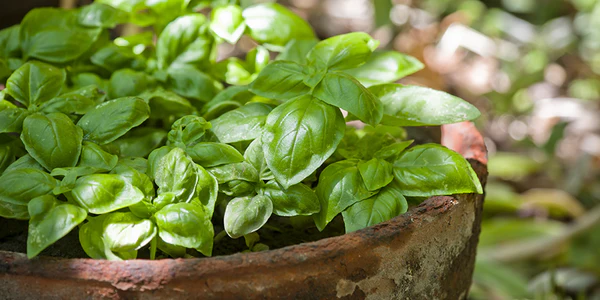
When and Where to Plant Basil
Best Planting Season:
- Outdoors: Plant after the last frost when soil has warmed to at least 60°F (16°C).
- Indoors: Start seeds 6 weeks before the last frost or anytime in a sunny, warm spot.
Basil loves warm temperatures and will quickly bolt in excessive heat, so it’s best grown in spring and early summer.
Choosing the Planting Location:
- Sunlight: Requires 6-8 hours of full sun daily.
- Soil: Well-draining, loamy soil rich in organic matter. Ideal pH is 6.0–7.5.
- Container Growing: Basil thrives in pots at least 6-8 inches deep with good drainage.
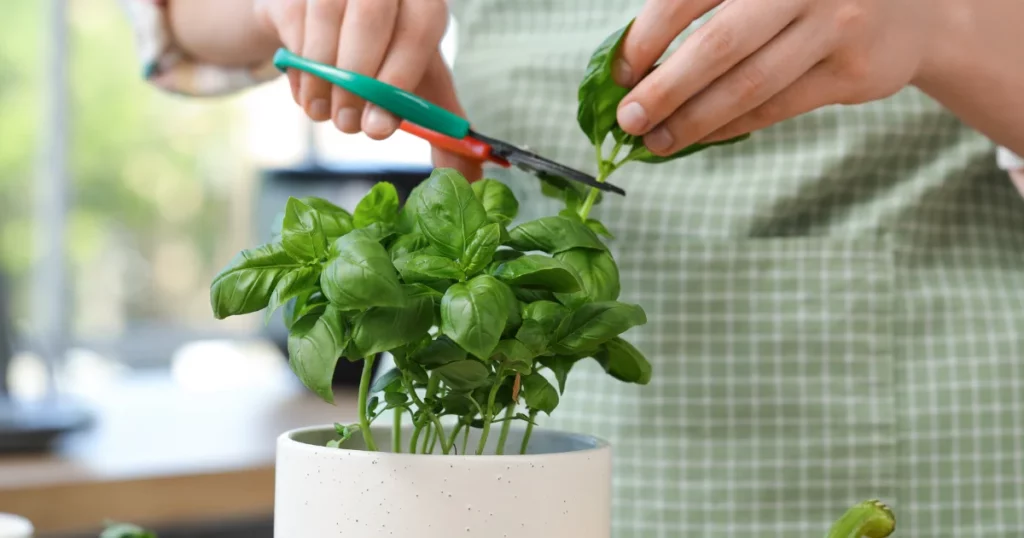
How to Plant Basil
From Seed:
Steps:
- Sow seeds ¼ inch deep in seed-starting mix.
- Keep soil moist and warm (70°F/21°C) for best germination.
- Thin seedlings to 6-12 inches apart once true leaves appear.
- Harden off indoor seedlings before transplanting outdoors.
Germination Time: 5-10 days.
From Nursery Transplants:
- Plant directly in the garden after danger of frost has passed.
- Space 12-18 inches apart in rows or clusters.
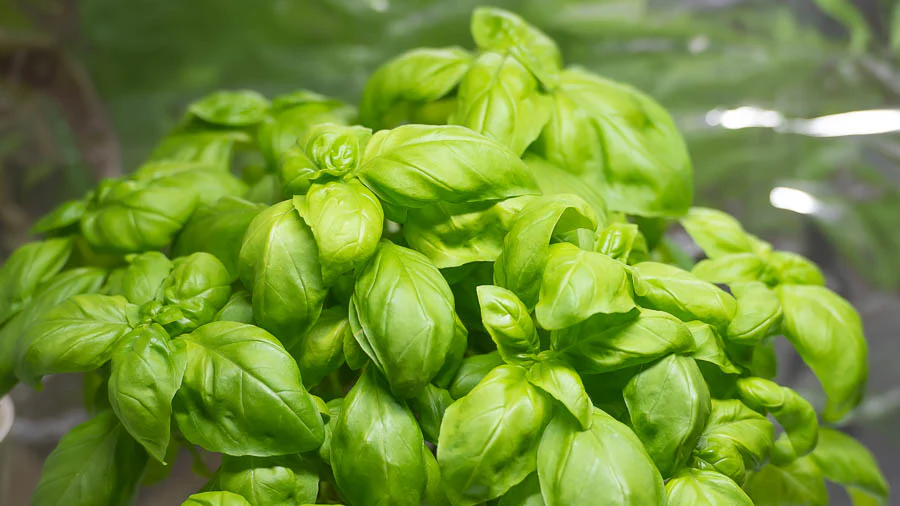
Caring for Basil Plants
Basil is low-maintenance, but regular care ensures a lush, continuous harvest.
Watering:
- Keep soil consistently moist but not soggy.
- Water at the base to prevent wetting the leaves, reducing the risk of disease.
- In hot weather, water early in the morning.
Tip: Basil in containers dries out faster — check daily during summer.
Fertilizing:
- Mix compost into the soil before planting.
- Feed with a balanced, organic liquid fertilizer every 3-4 weeks.
- Avoid excessive nitrogen, which produces leafy plants with less flavor.
Pruning and Pinching:
- Regularly pinch off the top leaves when plants are 6-8 inches tall.
- This encourages branching and prevents the plant from becoming leggy.
- Remove flower buds promptly to extend the harvest season.

Common Pests and Problems
Basil is relatively hardy but can face a few issues:
Pests:
- Aphids: Spray with water or insecticidal soap.
- Japanese beetles and slugs: Handpick or use organic traps.
- Spider mites: Increase humidity or use neem oil spray.
Diseases:
- Downy mildew: Avoid overhead watering; space plants for airflow.
- Fungal leaf spots: Remove affected leaves and avoid wet foliage.
Preventative Tip: Use well-draining soil and water at the base.
Harvesting Basil
You can start harvesting once plants have 4-6 sets of leaves.
How to Harvest:
- Use scissors to cut stems just above a pair of leaves.
- Avoid removing more than ⅓ of the plant at a time.
- Harvest regularly to encourage new, bushy growth.
Best Harvest Time: Morning, when oils are most concentrated.
Storing and Preserving Fresh Basil
Fresh basil leaves can be used immediately or preserved for later use.
Storing Fresh:
- Keep stems in a glass of water at room temperature.
- Cover loosely with a plastic bag to prolong freshness.
- Use within 5-7 days.
Drying:
- Hang bundles in a warm, dark, airy space.
- Strip leaves from stems once dry and store in airtight containers.
Freezing:
- Chop leaves and pack into ice cube trays with olive oil or water.
- Freeze and use cubes in soups, sauces, and sautés.
Making Pesto:
- Blend fresh basil, olive oil, garlic, Parmesan, and pine nuts.
- Freeze in small portions for use year-round.
Growing Basil in Containers
Basil is ideal for container gardening, offering fresh herbs right at your doorstep.
Container Requirements:
- At least 6-8 inches deep
- Well-draining potting mix enriched with compost
- Position in full sun
- Regular watering and fertilizing
Containers allow for easy mobility if you need to move plants out of intense heat or sudden rainstorms.
Companion Planting with Basil
Basil grows well alongside certain vegetables and herbs, offering natural pest control and flavor enhancement.
Good Companions:
- Tomatoes (enhances flavor and deters pests)
- Peppers
- Oregano
- Marigolds
Avoid planting near: Rue and sage.
Pro Tips for Growing Basil Successfully
- Start seeds indoors early in cooler climates.
- Pinch flowers regularly to keep leaves flavorful.
- Harvest frequently to stimulate new growth.
- Rotate planting locations annually to prevent disease buildup.
- Keep a few pots indoors for year-round fresh basil.
Final Thoughts
Growing your own basil is one of the simplest and most rewarding gardening experiences you can have. With minimal care and attention, you’ll enjoy a steady supply of aromatic, vibrant leaves to enhance your meals, beverages, and even your garden’s natural beauty.
Whether you plant basil in containers, raised beds, or directly in the ground, following this guide will help you cultivate healthy, bushy plants with leaves bursting with fresh, herbal flavor.
So grab some seeds or a few starter plants, find a sunny spot, and start your basil-growing journey today — your kitchen (and your nose) will thank you.
